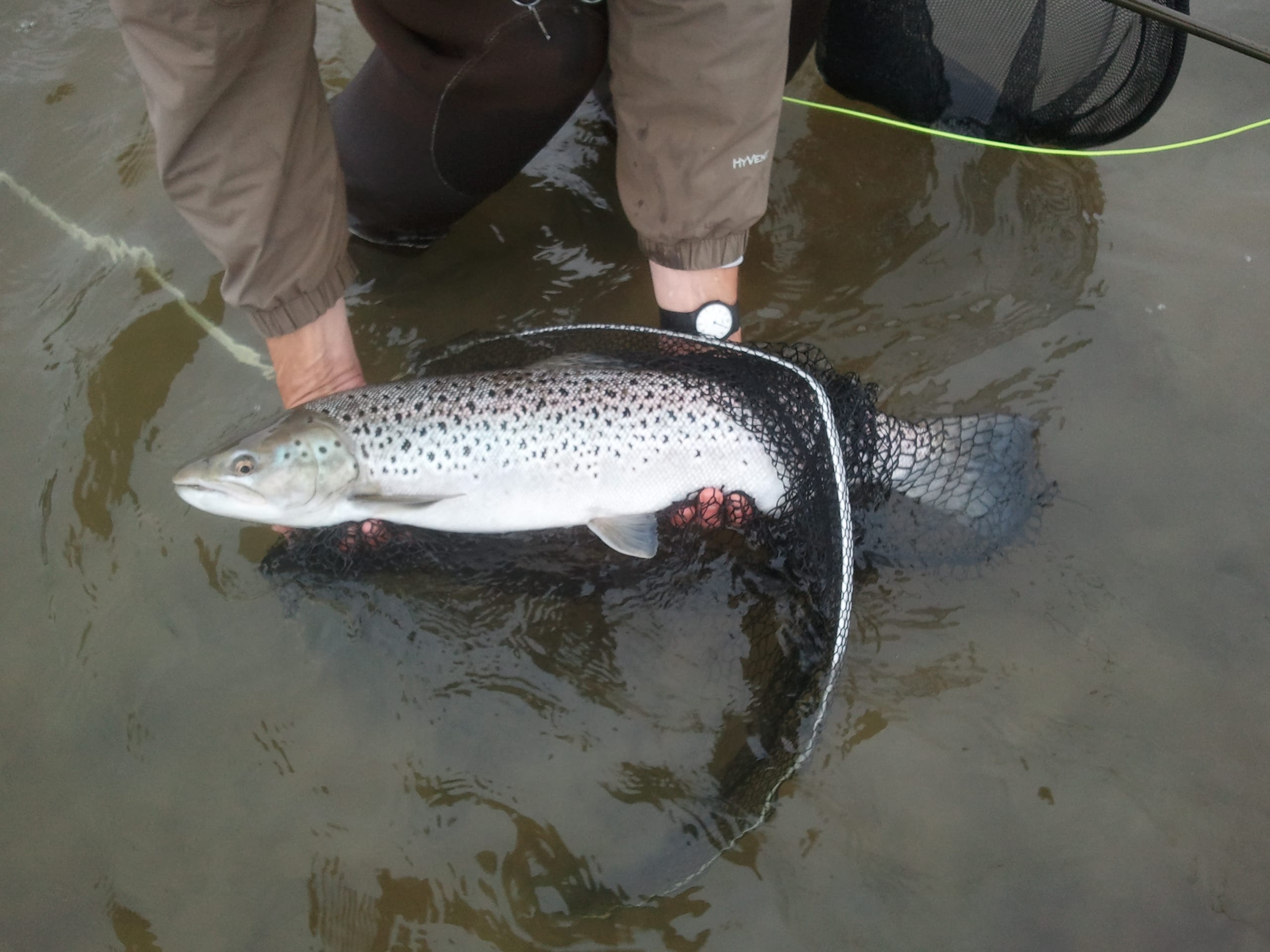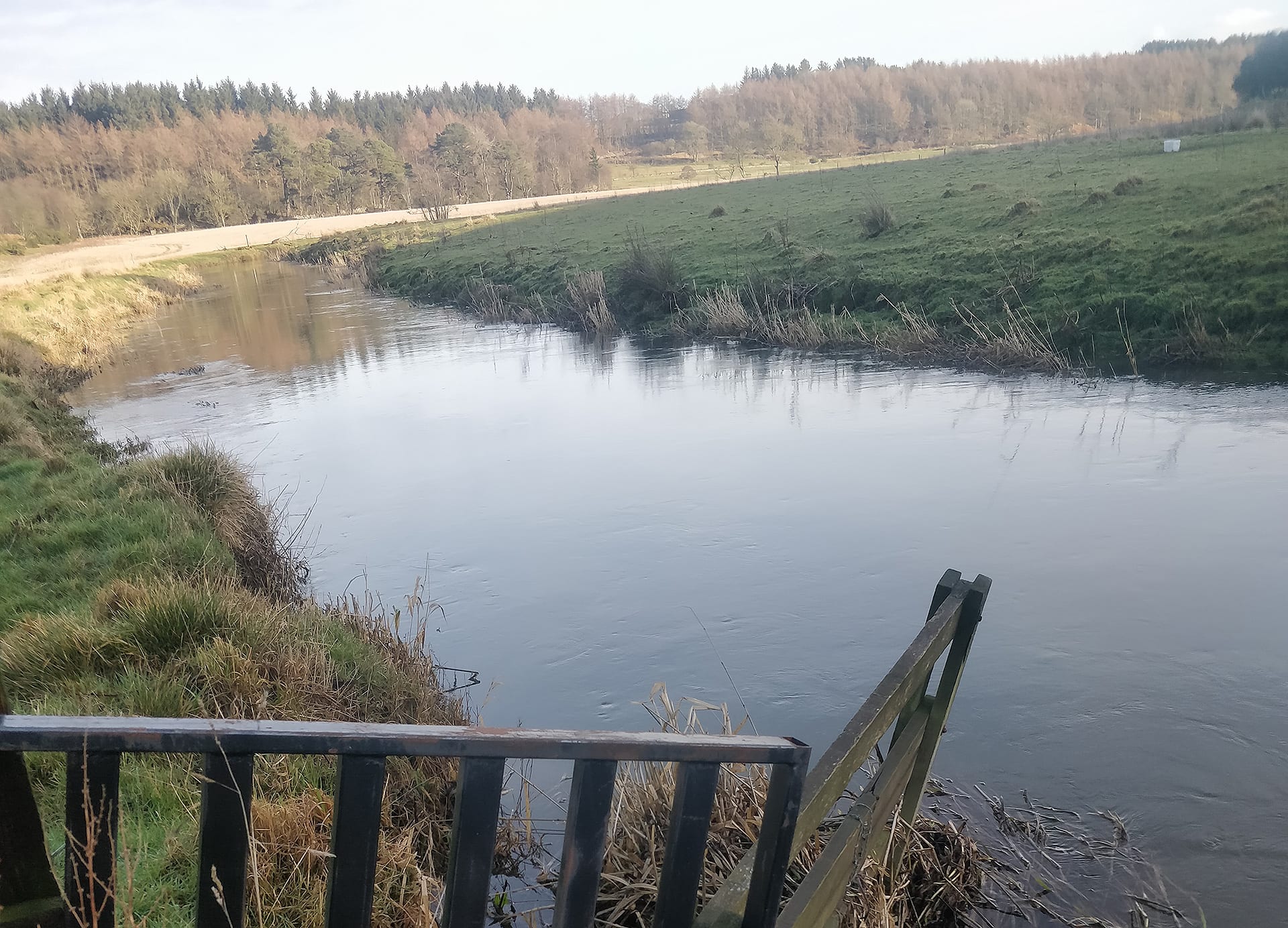River Ythan
We have extensive fishings on the River Ythan
Overview
We have extensive fishings on the River Ythan and these include the tidal Machar Pool and inland waters around Methlick & Ardlethen. Once the premier sea trout river in Britain, known for it’s large sea trout and salmon, the Ythan remains a unique and rewarding venue on which to pursue these migratory fish.


Beat Summary
This ADAA beat on the lower Ythan is a short tidal section between Ellon and Newburgh, some 900 to 1000 metres long, from Logie Buchan Bridge, downstream to the shallow water at the Machar Ford. Apart from the fishing it provides a superb location to enjoy seeing a huge variety of birds, depending on the time of year.
Although the Association has access on both banks, due to the muddy nature of many sections, not all of the water is accessible.
THE FISH
From my experience, typically, there appears to be very few fish in the pool from the start of the season until the beginning of April.
During April the beat can hold sea trout kelts and finnock, (mainly finnock which have over wintered in the river).It is mandatory that all kelts be returned to the river, and since at this time, finnock are generally in poor condition, I recommend that they also be returned.
The return date of the first of the clean sea trout varies from year to year, sometimes as early as the beginning of June, other years as late as mid August.
These early sea trout are the biggest and best quality of the whole season, do not expect monsters however, a typical Ythan fish is around 1.5 to 2.5lbs, a really good fish perhaps 3.5 to 4lbs. These fish are usually fairly free
Worming (mainly ledgering) also has its place in our Association and on this beat it gives an alternative to the previously mentioned methods, and is particularly useful during spate conditions when the water is dirty.
Worming gives an opportunity to introduce youngsters to angling, this method is also utilised by some of our members who are not as physically fit as they once were.
THE RECORDS
Only a few salmon and/or grilse are caught each year, an average of 3 or 4 for each the past 10 years.
Annual catches (including those fish returned) are currently around 190 sea trout and 400 finnock, have been so for some years, a far cry from the catches of over 1000 sea trout and 2000 finnock during the 1985 and 1986 seasons.
Takers, but are few in number, also at any slight rise in water level, disappear quickly upriver, one day there are fish in the pool, the next they are gone!
Provided there are few spates, the stock of sea trout increases to a maximum level in late September, by which time the majority are coloured and are generally returned.
From late August to the end of the season on 31st October there can be considerable numbers of clean finnock in the pool.
FISHING METHODS
Fly-fishing, spinning, and worming are all permitted, worming being restricted to the upper part of the pool.
Taken over the whole season fly fishing is probably the most successful and satisfying method, a 9 to 10 foot fly rod coupled with say a size 7 weight forward intermediate line (an old floating line that has lost some of its buoyancy can also be satisfactory), and a 9 to 10 foot leader having one dropper, with the lower section being rated at 6lbs, will suffice.
The most successful flies are
- Cinnamon and Gold, tied spider fashion, (no wings, no tail.) · Dunkeld. · Black Pennel.
- Mallochs Favourite
- All the flies above should be dressed slimly on size 12 to size 16 doubles
- A Dog Nobbler or Cats Whisker, size 10 or size 8 longshank, can also be productive, especially when the tide is still high.
WHEN TO FISH
The time of year – there is no easy answer, but refer to the previous section, THE FISH, for general guidance.
The time of day – remember the river is tidal. The pool is generally fishable from 2-3hours after high tide until around 2 hours before the following high tide.
BEST CONDITIONS
An overcast sky with a moderate down stream or cross-stream wind. Bright sunshine and/ or no wind usually means poor results, except perhaps at last light.
When the tide starts to drop the current will fish the flies down and across. As the tide slackens it is necessary to work the flies as you would in a loch.
Spinning can also be a useful alternative, particularly when half a gale is blowing, not an unusual occurrence given the exposed nature of the area.
Suitable lures include the
- Silver Krill,
- Mepps Spoons.
- Small Tobys.
- The Flying C.
When spinning , the retrieve should be quite fast.
Map
Tangland to Ythanbank. North bank only.
This beat on the middle Ythan starts a few hundred metres above the road bridge in Methlick and stretches upstream on the North bank for approximately 3500 metres.
For access to the lower part of the fishings, car parking is at the small
lay-bys near the horse stable, parking for the upper section is off the public roadway just beyond the small bridge over the Little Water of Gight. (small burn)
The river, essentially a spate stream, is at this point, quite narrow, a mere 4 to 6 metres wide.
The upper part of the river, adjacent to and above the upper car park, is, as it meanders through the valley, somewhat sluggish.
The lower section, downstream from the Waterloo Bridge and the Little Water of Gight, is much livelier, with some attractive runs suitable for fly-fishing.
THE FISH
At the start of the season on the 11 February the beat normally holds over -wintered finnock, sea trout kelts and salmon kelts.
These sometimes remain in this part of the river until the end of March/early April
Small numbers of clean sea trout can arrive in the beat as early as mid July following raised water levels, more generally, however, they are later, following substantial spates in August and September.
Since the middle of the last century spring salmon in the Ythan have become quite rare, whilst previously they were quite numerous.
The river, however, still has a small run of salmon in September/October, again depending on spate conditions to encourage them to run.
THE RECORDS
The 10-year annual average combined catch of salmon and grilse is approximately 13, with around 60% of these being returned.
The sea trout 10-year annual average catch is around 50, with some 70% of these being returned.
The finnock 10-year annual average catch is around 200, with some 80% of these being returned.
WHEN TO FISH
The time of year – February and March, then from mid- July onwards.
Remember- following heavy rain the Ythan can often be fishable when it is impossible on the Don.
Wooded area at lower part of the beat
BEST CONDITIONS
An overcast sky, during, or following spate conditions.
FISHING METHODS
Fly-fishing, spinning, and worming are all permitted.
Fly-fishing is not generally successful during the early part of the season, the water is cold and the finnock are not as active as they are later in the year. In the early spring most fish are caught whilst trotting a worm.
All salmon and sea trout kelts must be carefully released and returned.
At this time finnock are often in poor condition, and most are released.
From July to October, fly-fishing the streamy runs from the Waterloo Bridge near the car park, downstream to the bottom of the beat can be satisfying, and is best in a falling and clearing water.
A trout rod is all that is required, coupled with a floating line and 6 or 8lb cast.
Suitable flies include (size 14 or 12)
- Cinnamon and Gold
- Black Pennel
- Butcher
- Silver Stoats Tail
By early October most of the sea trout will be coloured and should be returned.
Silver finnock, however, can be in evidence until the end of the season.
The sluggish water in the top half of the beat is more suited to worm fishing or spinning, although spinning is somewhat tiresome, due to the repeated casting made necessary by the narrowness of the river.
Suitable lures include
- The Flying C
- Small Rapala
- Devon minnow.
Salmon normally appear in small numbers following any substantial spate in September and October, most being caught by worming, but occasionally by spinning or fly.
All coloured salmon should be released carefully and returned.
Alec Paterson. Convener Methlick Fishings.
Map
- Main Methlick 1
- Main Methlick 2
- Map Methlick
- Methlick 1
- Methlick 2
- Methlick lower latest map
- Methlick upper latest map